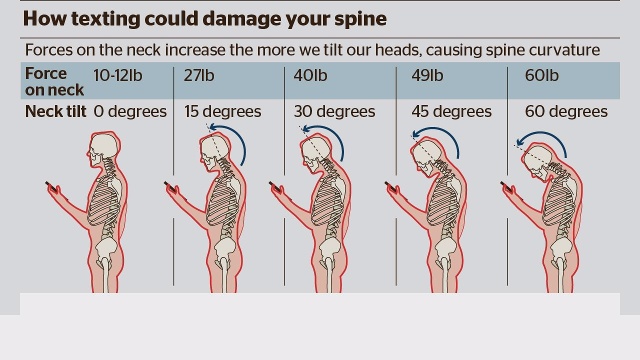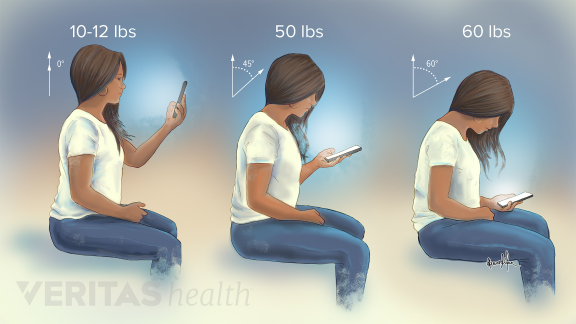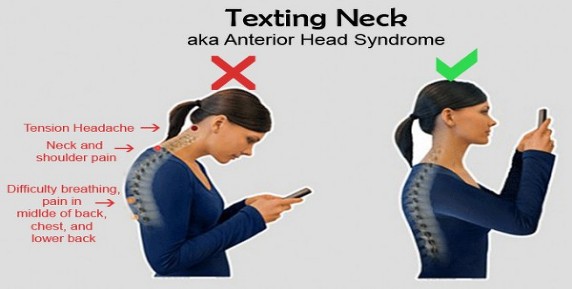Medical science evolves with time. Similarly, the diseases that don’t exist a decade back have become prevalent now. One such syndrome is Text Neck Syndrome.
The majority of the world in this era is a prisoner in the smartphone cage. More than half an hour without the smartphone gives the users anxiety about missing the messages, calls, and social media notification. So the use of smartphones is part and parcel of life now. The constant usage with the neck bent down to scroll the phone has given rise to this syndrome called the text neck syndrome.
Text Neck syndrome, also called iNeck, Turtle Neck Posture, or Anterior Head Syndrome, is an emerging concern in teenagers. In the United Kingdom, approximately 79% of teenagers have and use smartphones. Flexing the neck forward to 15, 30, 45, and 60 degrees for using the phone applies a force of 27, 40, 49, and 60 pounds respectively on the neck.

This amount of stress on the neck is similar to occupational overuse syndrome or repetitive stress/strain injury.
Usually, smartphone users present with complaints of a stiff neck, pain, and soreness in the muscles, and headache. The pain may radiate to shoulders and arms, and the patient may complain of weakness of shoulder muscles, tightened, and reduced mobility. In the long run, this may lead to earlier onset of arthritis, spinal degeneration, vertebral collapse leading to disc compression, flattening of thoracic kyphosis, and reduced lung capacity.
The best management approach is to prevent. For prevention, it is best to correct the posture while using a smartphone, so patient education tops the list. Instead of flexing the neck to use the phone, advise the patients to bring the cellphone to their eye-level.

Avoiding excessive usage, taking frequent breaks after every 15 minutes to straighten and move the muscles, and avoiding holding larger devices in one hand for long durations help reduce the neck tension.
iNeck is a repetitive stress injury, so frequent breaks may help the pain, but rehabilitation for 2 to 4 weeks improves joint mobility, stretches the muscles, and retrains the posture; therefore, it is effective in managing the text neck.
In cases of acute and severe symptoms, the primary goal is to provide adequate analgesia. Neck massage, cold or hot packs, chin tuck exercises, neck rotation, and neck bending with or without analgesics should be advised to the patients. A short course of muscle relaxants and non-inflammatory analgesics have been effective in relieving pain.
In severe, extreme, and chronic cases, intraarticular injections and acupuncture may be required.
References:
Neupane S, Ifthikar Ali UT, Mathew A. Text-Neck Syndrome-Systemic review. Imperial Journal of Interdisciplinary Research. 2017;3(7):141-148. Accessed 18 July 2019.
Toh SH, Coenen P, Howie EK, Straker LM. The associations of mobile touch screen device use with musculoskeletal symptoms and exposures: a systematic review. PLoS One 2017; 12(8): e0181220. Accessed 18 July 2019.




